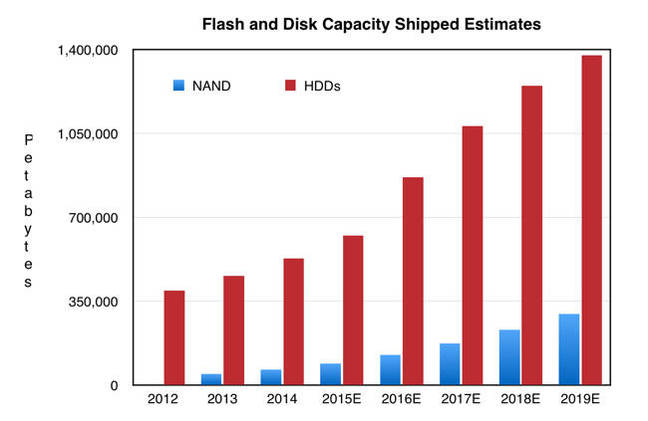Flash? The End of Disk?
A short
article in The Register mentions a topic, which is not very popular in an industry driven by innovation. Silicon to retain storage is growing by leans and bounds, but will it overtake Disk?
Samsung expects the NAND flash industry to have capacity to produce
up to 253 exabytes of total storage capacity by 2020, essentially "an
impressive 3x increase relative to the current industry capacity".
He points out that this is expected to account for
less than 10 per cent of the total storage capacity the industry will
need by 2020.
There is a tall mountain to climb... if there are capable climbers, there must be enough rope in order to climb a mountain!
Not So Fast...
It seems there may not be enough rope to climb this mountain, yet. Disk will be around for a longer period of time, than some expect. Sometimes, the factors of technology are impacted by economics.
every 10,000PB of NAND capacity costs $20bn, then to catch up with HDD
capacity shipped in 2019, the flash industry would have to spend $2tn.
We don't think it is going to happen unless flash capacity $/GB leaving
the foundry is sustainably lower than that of disk.
The cost of manufacturing Disks is less expensive than the cost of manufacturing silicon and this investment must be accounted for through the money supply as well as the people who are purchasing products.


No comments:
Post a Comment